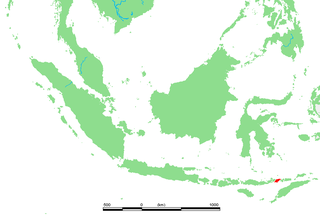
The wrasses are a family, Labridae, of marine ray-finned fish, many of which are brightly colored. The family is large and diverse, with over 600 species in 81 genera, which are divided into nine subgroups or tribes. They are typically small, most of them less than 20 cm (7.9 in) long, although the largest, the humphead wrasse, can measure up to 2.5 m (8.2 ft). They are efficient carnivores, feeding on a wide range of small invertebrates. Many smaller wrasses follow the feeding trails of larger fish, picking up invertebrates disturbed by their passing. Juveniles of some representatives of the genera Bodianus, Epibulus, Cirrhilabrus, Oxycheilinus, and Paracheilinus hide among the tentacles of the free-living mushroom corals and Heliofungia actiniformis.

The humphead wrasse is a large species of wrasse mainly found on coral reefs in the Indo-Pacific region. It is also known as the Māori wrasse, Napoleon wrasse, Napoleon fish, so mei 蘇眉 (Cantonese), mameng (Filipino), and merer in the Pohnpeian language of the Caroline Islands.

Lembata is an island in the Lesser Sunda Islands, also known as Lomblen island; it is the largest island of the Solor Archipelago, in the Lesser Sunda Islands, Indonesia. It forms a separate regency of the province of Nusa Tenggara Timur. The island has a very irregular coastline with numerous bays and promontories, of which the largest is the Ile Ape peninsula on the island's north coast. The length of the island is about 80 km from the southwest to the northeast and the width is about 30 km from the west to the east. It rises to an elevation of 1,621 metres at Mount Ile Labalekang.

Cheilinus is a genus of fish in the family Labridae native to the Indian and Pacific Ocean.

Pseudojuloides is a genus of wrasses native to the Indian and Pacific Oceans.

Cirrhilabrus, the fairy wrasses, is a genus of fish in the family Labridae native to coral reefs and nearby habitats in the Indo-Pacific region. They are brightly colored and do not surpass 16 cm (6.3 in) in length. Males are larger and more colorful than females. They are commonly kept in aquaria.

Halichoeres are a genus of wrasses found in the Atlantic, Indian and Pacific Oceans.

Paracheilinus is a genus of flasher wrasses, native to the Indian Ocean and the western Pacific Ocean.

Jansen's wrasse is a species of ray-finned fish, a wrasse from the family Labridae which is native to the Indian Ocean and Pacific Ocean. In the south-western Pacific Ocean it is replaced by sibling species black-barred wrasse. It can be found in the aquarium trade.

The Carpenter's flasher wrasse, Paracheilinus carpenteri, is a species of wrasse native to the western Pacific Ocean. It can be found on reefs at depths from 27 to 45 m. This species can reach 8 cm (3.1 in) in standard length. It can be found in the aquarium trade.

The yellow-breasted wrasse, Anampses twistii, is a species of wrasse native to the tropical waters of the Indo-Pacific area from the Red Sea to the Tuamoto Islands. It is found in lagoons and on reefs at depths of 5 to 30 m. It can reach a length of 18 cm (7.1 in). It is of minor importance to local commercial fisheries and can be found in the aquarium trade.

Macropharyngodon is a genus of wrasses native to the Indian and Pacific Oceans.

Oxycheilinus is a genus of fish in the family Labridae found in the Indian and Pacific Ocean.

Albertus Jacobus Duymaer van Twist was the Governor-General of the Dutch East Indies from 1851 to 1856.
Bodianus neopercularis, is a species of wrasse from the family Labridae which is native to tropical and warm temperate waters of the Indo-West Pacific, particularly the Marshall Islands. A record of Bodianus opercularis from Palau has now been reidentified as this species.

Labriformes is an order of ray-finned fishes which includes the wrasses, cales and parrotfishes, within the clade Percomorpha. Some authors include the Labriformes as the clade Labroidei within the Perciformes while others include more families within the Labriformes, such as the cichlids and damselfishes, but the 5th edition of Fishes of the World includes just three listed in the section below and includes 87 genera and about 630 species.

The blackear wrasse is a species of wrasse, a type of fish in the family Labridae, from the warmer waters of the western Atlantic Ocean.
Cirrhilabrus shutmani, also known as the magma fairy wrasse, was discovered by RVS Fishworld in 2016 living around the Didicas Volcano in the Babuyan Islands of the Philippines. The magma wrasse belongs to the family of 'Labridae', a colourful species of tropical and subtropical fish. The magma wrasse is found in tropical coral reef, within the depth range of 50–70 metres (160–230 ft). This species of fish usually inhabits steep slopes around coral reefs made up of loose rubble. It can be purchased within the aquarium trade.

The lemon-striped pygmy hogfish is a species of ray-finned fish from the family Labridae, the wrasses. This species is found on reefs in the Coral Sea off the coast of Queensland and in French Polynesia.
Amanda's flasher wrasse is a colorful cryptic species of wrasse discovered in the Great Barrier Reef off the coast of Australia. The wrasse was described through a major taxonomic review of wrasses of the genus Paracheilinus off the Australian coast. It is found in the reefs of the Great Barrier Reef and the Coral Sea, with sightings off the coast of Queensland state.















